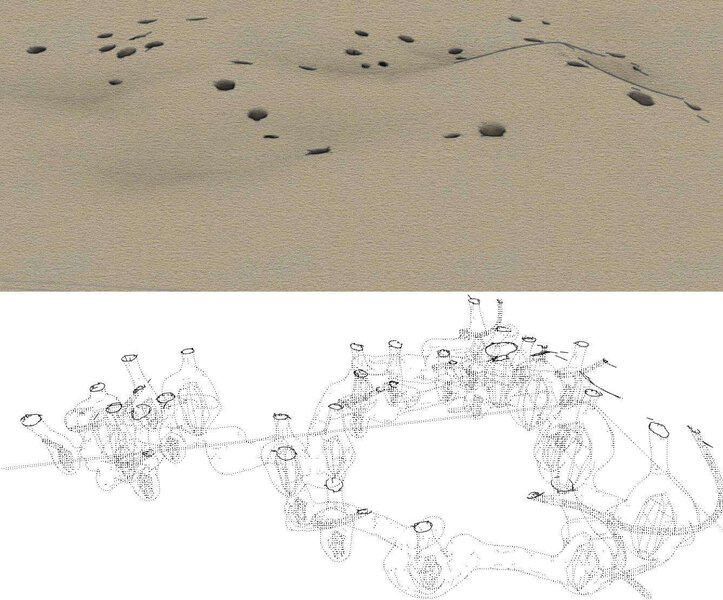Create a free profile to get unlimited access to exclusive videos, sweepstakes, and more!
Humans could someday be living underground on Mars, which is the best SPF of all

The scorched and frozen surface of Mars is no place to be wandering around for too long. Space suits get worn down, and even the toughest habitats may not block out radiation, micrometeorites, and anything else that could potentially kill you.
Future Mars-tronauts may not have to worry about being exposed to Martian hazards even when they sleep. The solution could be right beneath their boots. Led by Henriette Bier, a research team at Delft University of Technology in the Netherlands has now received ESA funding to develop a preliminary proof of concept for a system of underground habitats that can be built and 3D-printed by a swarm of autonomous robots.
“The biggest challenges we face in bringing our concept into reality are related to the harsh conditions on Mars and the unstructured environment in which robots need to implement their work,” Bier, who recently published a study detailing the concept, tells SYFY WIRE. “There is a risk of potential damage to the robot equipment while working in unknown and highly unpredictable environments on Mars.”
Subsurface hangouts may be the safest option for astronauts who are going to be spending extended periods of time on the Moon and Mars. Lunar lava tubes and Martian hideouts could someday turn into entire colonies — think District 13 in The Hunger Games. Even though the Moon is dead and we still haven’t found anything alive (or even extinct and fossilized) on Mars, there are many theories out there that back the idea of any hypothetical microbes on the Red Planet living or having lived deep beneath the surface.
Any bots that land on Mars are going to have to face unfamiliar territory. If the idea takes off someday, those swarming robots will be doing everything themselves with materials already found on Mars, no human intervention required, though humans may have to step in if rebooting is needed. Most tech for building habitats that has been developed on Earth doesn’t bother with bringing robots in. The environment is not structured enough and changes constantly, which could cause them to break down. Even Opportunity succumbed.
“No similar off-Earth habitat construction projects have been conducted so far on-site,” Bier says. “To mitigate the level of risk associated with the current absence of of similar projects or technologies on Mars, preliminary data will be collected on similar Earth-based research and demonstrations. This will be a starting point for the calibration of the initial systems engineering budgets and assumptions.”
What the robots will have to endure may be even more difficult than what rovers like Opportunity (RIP), Curiosity, or Perseverance put up with as they crawl over the face of Mars. Rovers have a precedent. There is no precedent for any type of Martian habitat, let alone an underground network of habitats. This is why everything that possibly could go wrong needs to be assessed. There will be trade-offs, such as finding a way to fly over materials, such as the robots themselves, that cannot be found on-site. The team also needs to be prepared for a communication breakdown. Robots will have to follow commands beamed over from Earth, and how autonomous they will be remains to be seen.
The habitat complex is envisioned as a rhizome of spiral structures that are entered through holes in the surface and slope downwards for maximum safety. Most of the payload will be equipment. There will be no need for launching building materials, since the bots will be using Martian water and regolith to create cement that will then be 3D-printed or sprayed onto the walls of tunnels and habitation spaces to prevent them from collapsing. An infrastructure is necessary for cement production. Bier imagines that this infrastructure could be built in an empty lava tube, though that phase of the project is still light years away.
“Our major milestones are connected to manufacturing and transport payloads, operating and maintaining an energy system, manufacturing and producing underground structures, operating the habitat, and handling communications,” she says. “We will implement numerical and experimental tests for the proof of concept.”
If humans someday want to be Martians, this could be how our species makes it happen.




























